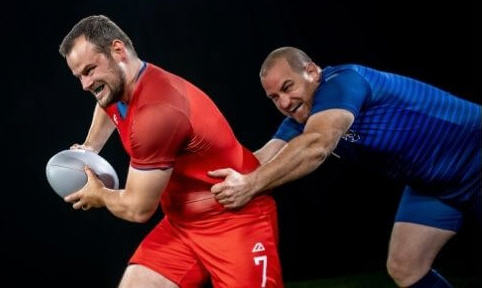The NFL is one of the first sports in the world to deal with brain injury-related lawsuits from former players. The legal situation has been very messy and hard to follow for sports fans.
This is partly because each state in the United States has its own legal code. To make things more complicated, the Federal Government has a legal code that’s entirely separate from the state systems.
That makes for a complex tangle of jurisdictions, and the laws are often in conflict. This article will explain the ins and outs in plain English.
Apart from lawsuits against the NFL, there have been cases taken against Riddell (the company that makes the NFL’s helmets) and against specific teams. We’ll focus here on the Federal claim against the NFL as a league.
Early History Of Head Injuries In Football
The idea that football-related concussions could be dangerous goes back a long way.
In 1893, a doctor told Joseph Mason Reeves that he would be facing insanity or death if he got another head injury while playing football.
But Reeves didn’t give up the game. Instead, he created one of the first attempts at football headgear.
You can read more in our history of football helmets.
Dr. Bennet Omalu And The Steelers
Now let’s move to the modern era of brain injury litigation.
In 2005, Dr. Bennet Omalu published a paper where he discussed his findings from the autopsy of former Pittsburgh Steeler Mike Webster.
The doctor described a new condition that he called Chronic Traumatic Encephalopathy or CTE. Basically, this means a brain injury.

The NFL demanded that he retract the paper.
Instead, Dr. Omalu followed up with another paper detailing his findings regarding Steeler Terry Long.
Things got worse for the NFL quickly after this.
It was discovered that while the NFL was denying any relation between brain injury and football, it had been paying brain injury-related disability settlements to at least three players.
When this became common knowledge, permanent brain injury quickly became a public relations nightmare for the NFL.
First Federal Lawsuit Against The NFL

In 2011, seven players joined in an initial lawsuit in the Federal Court. The most famous was the Chicago Bears Super Bowl-winning quarterback Jim McMahon.
This was the case of “In re: National Football League Players’ Concussion Injury Litigation“ (yes, that’s a mouthful. We’ll explain next).
Soon, thousands of other players filed against the NFL.
Summary Of Allegations Within The Lawsuits
It’s important to note that there has never been a judgment against the NFL related to brain injury.
So the allegations made by the players regarding the NFL remain just that: allegations.
We can summarize the broad thrust as follows.
- the NFL knew about the potential for injuries causing permanent brain injury
- the NFL concealed and lied about evidence of this
- the NFL didn’t take proper precautions to reduce injury to the players.
Settlement Between Players And The NFL
In early 2013 the NFL brought a motion to dismiss the suits.
In July of that year, District Court Judge Anita Brody ordered the parties to undergo arbitration. The parties went back into court in August of 2013 to say they had reached a settlement.
The settlement was officially approved by the Court in 2016.

It would be impossible in an article of this size to cover all the provisions of this huge agreement, but there are several very important points.
No fault found on part of the NFL
Most importantly to the NFL, there is no finding of fault on their part.
It means that the NFL has not admitted, nor has the court found, that they either knew or concealed that the game caused brain injuries to players.
Players didn’t have to prove the cause of their brain injury
The terms of the settlement meant that players are not required to show that an injury during their NFL career caused their current condition.
In other words, NFL lawyers couldn’t point to a car crash or a fall in their private life to say that this might be the cause of the brain injury.
This removed a big difficulty for players.
NFL funds

The NFL agreed to contribute $765 million to provide medical help to over 18,000 former players.
There was a provision for retired players to apply for additional help. There were lump-sum payments for players with CTE (brain injury).
The NFL was also to provide $10 million for neurological research and education.
At present, the NFL has paid out well over a billion dollars under this agreement.
While this continually undergoes modifications and adjustments, it’s still the basic agreement that’s in place.
“Race-Norming” Controversy
One recent controversy regarding this settlement is the concept of race-norming.
In attempting to assess brain injury, neurologists create a cognitive function baseline as a starting point. They use this level to decide whether there has been a decline in cognitive function.
African-American players discovered that the medical professionals were using “race-norming” in their assessment. This assumes that black individuals start at a lower level of cognitive function when setting a baseline.
Two black players brought a lawsuit against this practice. They argued that it was much harder for black players to show dementia than white players. After all, if they were starting at a lower baseline then it’s hard to show significant decline.
Judge Brody threw out the suit as an impermissible attack on a court-approved settlement.
However, she also expressed concern about race-norming. The judge told the parties to come to an agreement regarding the use of race-norming.
There was general disquiet amongst the general public when the practice became known. The NFL wouldn’t be garnering many friends by insisting that it be continued.
In June of 2021, the NFL announced that it would cease to use race-norming.
Effects Of The Lawsuits On Football
The biggest effects of these suits come less from the legal results and more from the public mood toward the NFL. And of course, there is more knowledge out there about head injuries in general.
It’s almost impossible to overstate the negative publicity when allegations that the NFL concealed the effects of concussions were first reported by the media.
Even now, most of the general public believes the NFL was hiding data. We should state again that this has never been shown.
It’s fair to say that the media take a somewhat alarmist tone about head injuries in the NFL. Most journalists seem to assume that the link between concussion and permanent brain injury is a proven fact.
This is despite the lack of a scientific consensus on any such link.
This all goes back to the original bad publicity storm generated by the circumstances around these lawsuits. The problem here isn’t just that the NFL hierarchy has a bad rep.
Youth football participation is down almost 10 percent. This is an ominous sign for the future of the game.
The NFL have moved to alter the rules of the game in an attempt to mitigate concussions. This means that modern football looks very different from what it looked like before 2010.
Effects On Other Contact Sports
The negative media storm generated when the NFL baulked at paying former players has been seen by every other contact sport on earth.
The general perception is that if the NFL had just settled early and quietly, it would have suffered little or no image damage.
There would not now be the perception that the league lied and tried to cheat injured former employees.
Rugby Union

Currently, there is a lawsuit being taken by several former professional rugby players suffering from early dementia.
The governing bodies will not want a repeat of what happened with the NFL. This is why we believe that professional rugby players have a good chance at getting a decent settlement!
You can read more in our in-depth article on concussion lawsuits in rugby.